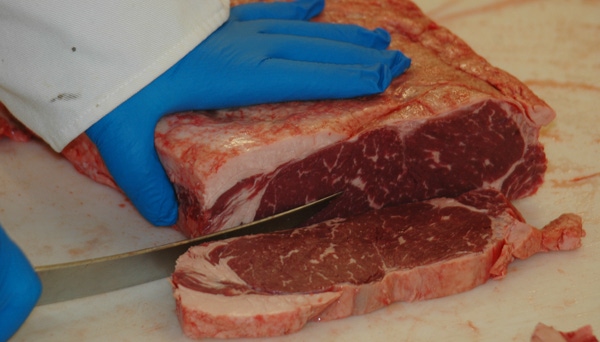Boneless Lean Beef Trimmings Is A Safe & Wholesome Beef Product Made By Separating Lean Beef From Fat
American Meat Institute President J. Patrick Boyle issues a statement on the safety of boneless lean beef trimmings.
March 8, 2012

Boneless lean beef trimmings (BLBT) is a safe, wholesome and nutritious form of beef that is made by separating lean beef from fat. To make the product, beef companies use beef trimmings, the small cuts of beef that remain when larger cuts are trimmed down. These trimmings are USDA inspected, wholesome cuts of beef that contain both fat and lean and are nearly impossible to separate using a knife. When these trimmings are processed, the process separates the fat away and the end result is nutritious, lean beef. It’s a process similar to separating cream from milk.
One process uses food grade ammonium hydroxide gas, something commonly used in the production of many foods, to destroy bacteria. Whatever process is used, it is all done under the watchful eye of USDA inspectors and according to strict federal rules. Lean finely textured beef is blended into foods like ground beef. Producing BLBT ensures that lean, nutritious, safe beef is not wasted in a world where red meat protein supplies are decreasing while global demand is increasing as population and income increases.
Some recent media reports created a troubling and inaccurate picture, particularly in their use of the colloquial term “pink slime.” The fact is, BLBT is beef. The beef trimmings that are used to make BLBT are absolutely edible. In fact, no process can somehow make an inedible meat edible; it’s impossible. In reality, the BLBT production process simply removes fat and makes the remaining beef more lean and suited to a variety of beef products that satisfy consumers’ desire for leaner foods.
In fact, BLBT is a sustainable product because it recovers lean meat that would otherwise be wasted. The beef industry is proud to efficiently produce as much lean meat as possible from the cattle we raise. It’s the right thing to do and it ensures that our products remain as affordable as we can make them while helping to feed America and the world.”
Consumers with questions are encouraged to visit www.MeatMythCrushers.com. For information on the use of ammonium hydroxide in other foods, visit http://www.foodinsight.org/Resources/Detail.aspx
You May Also Like


.png?width=300&auto=webp&quality=80&disable=upscale)
